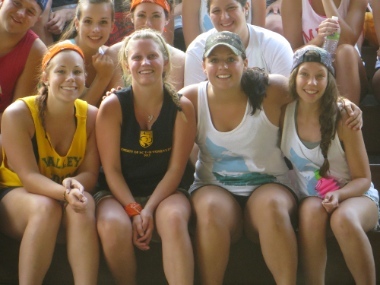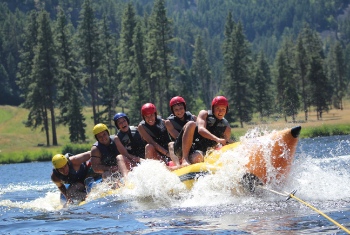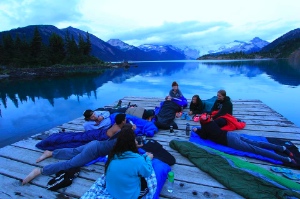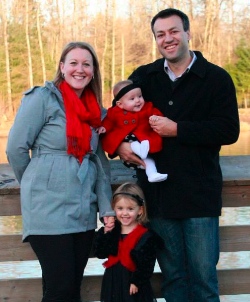
Young Life works with high school age young people in various parts of Metro Vancouver, and around the world.
It is just over 60 years since Young Life Canada began working with high school age young people, introducing them to Jesus and encouraging relationships that could make Jesus a reality in their lives and communities.
Young Life leaders in Surrey hope to double or even triple that relationship-building activity during the next two or three years, beginning this fall, according to Brendan Weidner, Young Life’s director for that south-of-the-Fraser area.
I had an opportunity, recently, to sit in on a leadership recognition evening. Weidner introduced Melissa Gendron, who will be working with teens in the northern part of Surrey – including the Central City, Whalley and Guildford areas.
He also noted that Young Life activity, which has been dormant in the South Surrey/White Rock area, is set for renewal during the next year.
If things go according to plan, Young Life could be working with 400 or more high school young people. At present, about 125 are being reached, mostly in a band across central Surrey, encompassing the Cloverdale and Panorama Ridge communities.
Weidner is careful to note that these higher figures will not occur overnight. Gendron will begin working with, perhaps, 40 or so young people in the next few months.
How might this growth be achieved? An introductory statement on Young Life’s website provides some context:
Since Young Life Canada began in 1954, its leaders have cared enough to leave the comfort of their adult worlds and enter the arena of high school and junior high school life. You will find Young Life leaders sitting in the stands at hockey games, walking the streets of inner city neighbourhoods, driving carloads of kids to the shopping malls or tutoring students in study centres after school.
Following the leadership recognition event, I talked with both Weidner and Mike O’Leary, the national leader of YLC, who, as it happens, lives in the organization’s current Surrey strong spot.
Developments in the northern and rapidly urbanizing parts of the city came with “the interest of a few adults who formed the nucleus of an area committee,” Weidner notes.
“Two couples, David and Stephanie Broughton and Mike and Jennie Starr, began scouting out the area. Both have long histories with Young Life.” Gendron, for her part, “has previous experience working with a non-profit and was also pretty familiar with the students in the area.”
Some parts of north Surrey, like the Guildford area, are still pretty suburban and relatively middle class. Large parts of that area would be populated with residents who have at least a nominal acquaintance with Christianity.
Others, like the Whalley area surrounding Central City have many families that are either single parent, needing relatively low-cost housing or otherwise below the poverty line. Other neighbourhoods, while relatively well off, have high levels of recent immigrant population, particularly from the Middle East and Asia.
All that causes Young Life to recognize that each high school community or neighbourhood will have different challenges and needs.
Young Life, Weidner notes, does not work directly in high schools, but rather “holds its club meetings in the homes of adults who are supportive of the program.” All those aforementioned activities – hockey game attendance, tutoring, driving people to malls – are for building friendships. The club meetings themselves become the opportunities to introduce people to Jesus.
 Young Life has become famous for its camp activity. Malibu, on Princess Louisa Inlet, an eight hour boat ride north of Vancouver, was once a millionaires’ resort. Young Life founder Jim Rayburn acquired it for the embryonic organization in the early 1950s. For decades, American and Canadian Young Life organizations shared the facilities.
Young Life has become famous for its camp activity. Malibu, on Princess Louisa Inlet, an eight hour boat ride north of Vancouver, was once a millionaires’ resort. Young Life founder Jim Rayburn acquired it for the embryonic organization in the early 1950s. For decades, American and Canadian Young Life organizations shared the facilities.
“Then a few years ago, the Canadian organization, under the leadership of Hal Merwald,” began a search for a site which could be used yearlong by Canadians. “In 2005, RockRidge Canyon, near Princeton, began,” Weidner notes.
Thus Canadians had their own facility available for outreach, leadership development and a range of Young Life alumni get-togethers. Waterfront sports are very often a major emphasis in the camping experience – including the legendary “zip line.”
This is the time of year, in fact, when RockRidge Canyon activities move into high gear, so that relationships built during the year with the clubs can be encouraged and reinforced over the summer holiday period.
 (Young Life has 30 camps – including the two in western Canada. And the search is on for a site in eastern Canada, in Ontario or Quebec.)
(Young Life has 30 camps – including the two in western Canada. And the search is on for a site in eastern Canada, in Ontario or Quebec.)
Mike O’Leary, as national president, paints the broader picture of the Canadian Young Life development through the years. The initiation of Young Life Canada and the beginning of activity at Malibu both took place in 1954. But Young Life started in the United States in 1941, through the inspiration of Jim Rayburn, a Texas Presbyterian minister and youth worker. Interest in Young Life moved northward, from California into British Columbia and from New York into Ontario.
Asked what is different in 2015, compared to that founding year of 1941, O’Leary says: “The beauty of what happens is that teenage culture changes every year. And, since 9/11, in effect, everything is different. What did not change between 1941 and 2015 is the need for relationship and the trauma of bringing it all back to the same Jesus.”
Young Life now operates in about 95 countries. In the United States, there are about 500 clubs; in Canada, about 40, with 26 of them being in the Coastal Region – eight on Vancouver Island and 18 in and around Vancouver. The Coastal BC regional director is Eric Keillor.
Both O’Leary and Weidner acknowledge that Young Life has ebbed and flowed over the years, but has, even with its low public profile, gradually strengthened both its spiritual and relational ethos.


